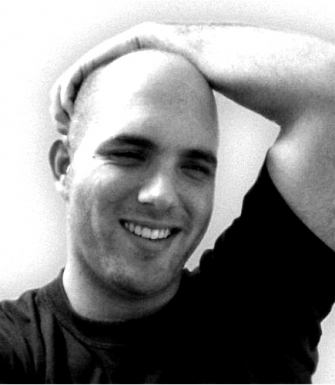Diego Lama’s videos, which have been displayed in many festivals around the world, are structured around an intense mixture of meanings through tense relations between sound and image, structure and rhythm. Max Hernandez Calvo, Professor at Corriente Alterna – Fine Arts College – in Lima, Peru, in an essay on Lama’s work, stated that his work is structured around an intricate mixture of pessimism and pleasure.
Calvo’s observation shows how Lama’s works are articulated, especially in the light of the relation between sound and image in his videos. Well-known images taken from films are rearticulated, gaining new meanings when transposed into a new context with new sound. The most important ingredient in this mixture of pessimism and pleasure is a strong dose of irony.
We can realize it in the ironic No-Latin Party (2003). This work displays the images of a cocktail party in a typically bourgeois penthouse taken from Francis Ford Coppola’s The Godfather; those images gain new meanings with the alterations made by Lama: the original soundtrack is replaced by Carmen Miranda’s song South American way, producing a contrasting effect, and party’s cake, which is elegantly served to the guests, has the Venice Biennale’s logo upon it. Thus, the images of Coppola’s film seem to be destroyed by the inclusion of the Venice Biennale’s logo and Miranda’s song, but some elements remain untouched. The Mafia theme is still there, but is relocated and rearticulated in a totally ironical tone in relation to the art world and its strange relations with marked and politics, especially in big international exhibitions like the Venice Biennale.
This procedure of altering the soundtrack allows the generation of new meanings in other videos, as in I've got you under my skin (1999). In this video, a series of photographs of women in sado-masochist scenes – bound, gagged, shackled slaves – is edited with the use of morph effect, re-creating their bodies to the sound of the Frank Sinatra's song that titles the video. Between pain and pleasure, we realize the destruction of the bodies and the re-creation of the skin through the video. Maybe this is the video which best displays the tension observed by Calvo.
This contrasting, provocative relation between sound and images appears in other works like Esteroscopia (2000). the screen is divided into two parts (a technique also used in other works); one of the parts displays a fish struggling out of water, and the displays a soldering process, the sounds of which rule the rhythm of the fish's movements. The soldering process rules the nature of the fish, a being that seems to be in tune with the movements of the the industrial process. It seems that Lama is trying to show us how opposite things can be closer to each other than we think.
In Lama's works, there is a conjunction of the appropriation of images from films and the divisor of the screen into two, revealing a deep preoccupation with form. This conjunction becomes explicit in Interdicciones (2001), which displays the image of the slitting of an eye on one side of screen (taken from Un Chien Andalou – 1929 Luis Bruñel and Salvador Dalí), and a cello's bow sliding over the strings, playing Bach, on the other. Formal approximation and stylistic distance at the same time. A bit of pleasure, a bit of pain.
Lama's provocative, explosive work opens the international editions of the FF>> Dossier, displaying the strength of Latin American productions, encouraging us to extend our relationship with the southern circuit.
